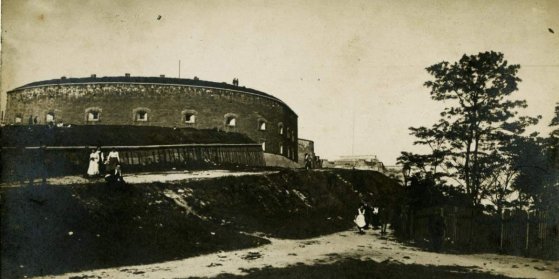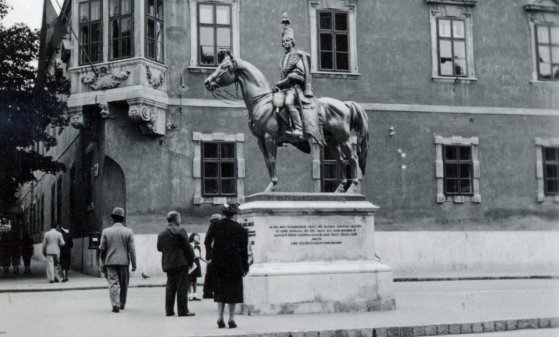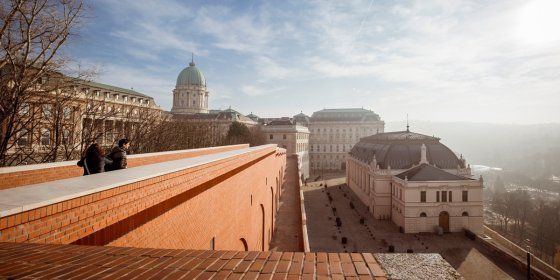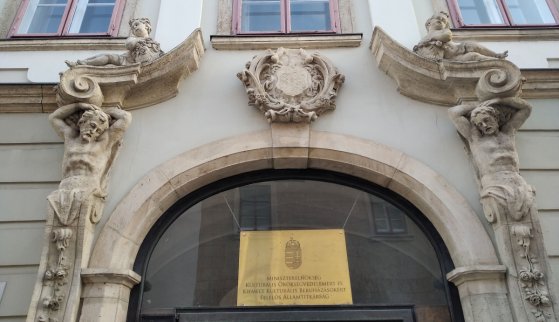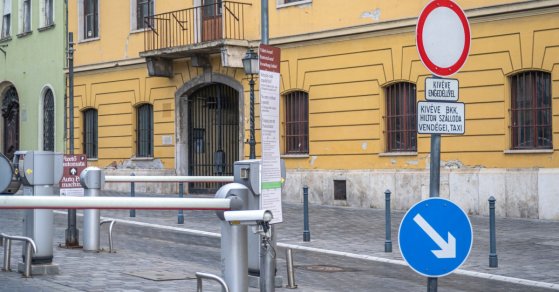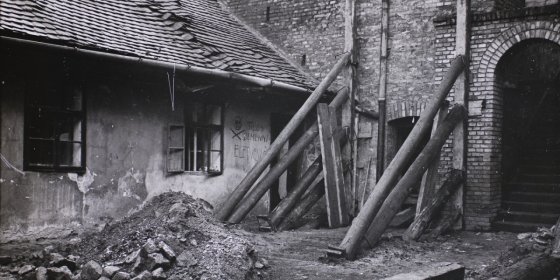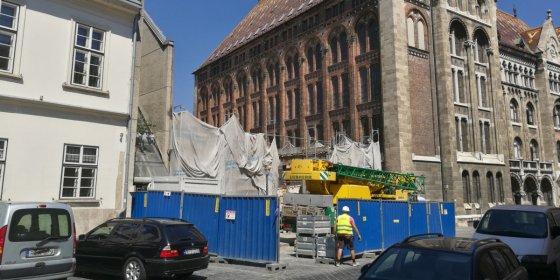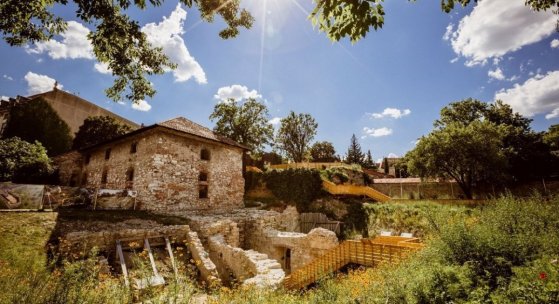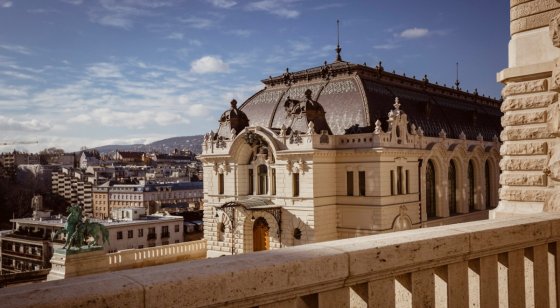 The „intertwined history” of the bridges and the city of Budapest
Which ideas and events have shaped the fate of bridges of Budapest and the cityscape? Alongside many other interesting facts, this question is also answered this newly published book by the Budapest City Archives, which introduces the history of bridges in Budapest.
The „intertwined history” of the bridges and the city of Budapest
Which ideas and events have shaped the fate of bridges of Budapest and the cityscape? Alongside many other interesting facts, this question is also answered this newly published book by the Budapest City Archives, which introduces the history of bridges in Budapest.
Castle
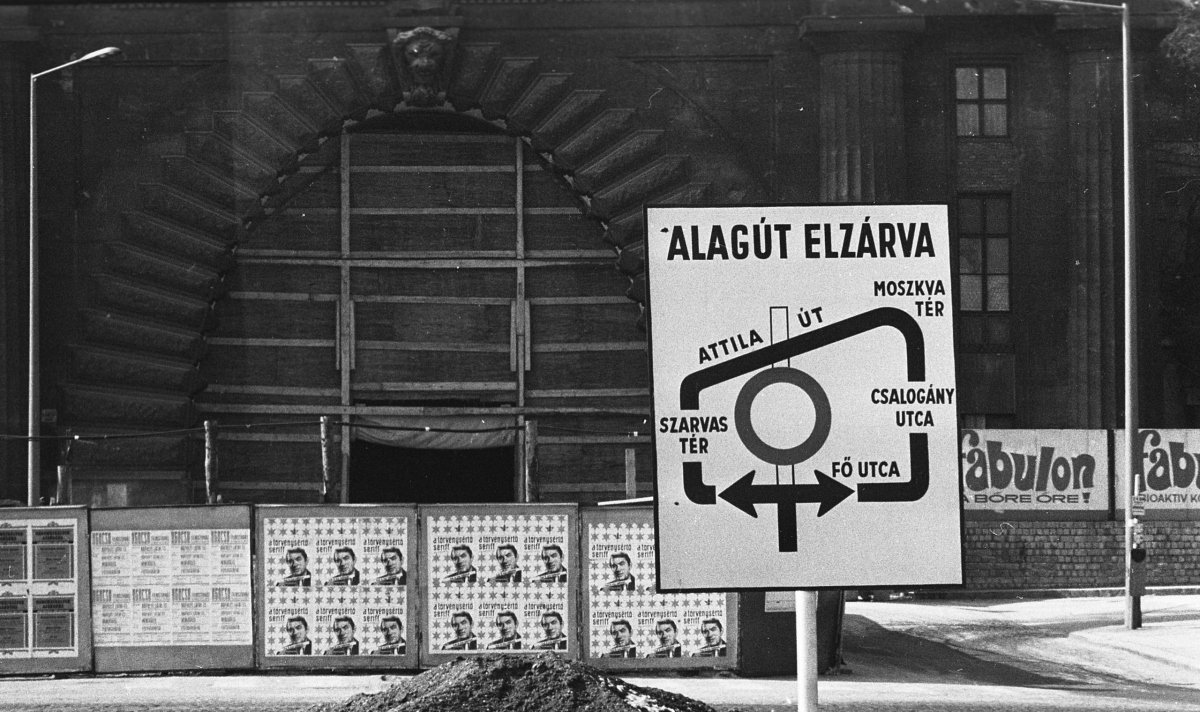 The renovation of the Buda Castle Tunnel began 50 years ago on the occasion of the 100th anniversary of the city unification
The renovation of the Buda Castle Tunnel began 50 years ago on the occasion of the 100th anniversary of the city unification
January 8, 2023 at 2:00 PM
The Buda Castle Tunnel is an important traffic route in Budapest and also an interesting technical monument. When it was handed over in 1857, it was part of the route leading to the only bridge at the time, and it has not lost its traffic importance even into the 21st century. Although it was designed for horse-drawn carriages, today it is used by cars. The current appearance of the passage took shape 50 years ago, the Tunnel was closed on 8 January 1973 due to the works.
Fortress over the city - The true history of the Citadel and common misconceptions
May 14, 2022 at 11:00 AM
A foreign tourist may not even believe that Gellért Hill was not created by human hands. Towering in the middle of the city, it offers stunning views, so the idea that it was built for tourism may be obvious. Yet it is a gift of nature, and the view could be used not only for pleasure but also for military purposes. This justified the construction of a fortress on the hilltop called the Citadel. The building will be completely reborn thanks to the Várkapitányság, we now have the opportunity to see the work in progress.
The equestrian statue of András Hadik was unveiled in the Buda Castle 85 years ago
April 28, 2022 at 9:00 AM
The work of the sculptor György Vastagh Jr., who also made the Csikós statue, was unveiled in 1937 in the small square at the intersection of Úri Street and Szentháromság Street in the presence of the country's leaders at the time. The statue commemorating the former warlord of the Habsburg Empire, András Hadik and the 3rd Hussar Regiment, has been associated with a strange custom among graduating students of the Műegyetem (Budapest University of Technology) since the 1950s.
A world-famous Hungarian brand - The Törley Champagne Factory is 140 years old
April 22, 2022 at 9:00 AM
To this day, Törley champagne is one of the most famous Hungarian products, an almost obligatory element of the celebrations in Hungary, and the brand is also present in many foreign countries. Like almost everything, the roots of this factory date back to the second half of the 19th century, the period of dualism: József Törley founded his plant in Budafok in 1882, exactly one hundred and forty years ago. However, not only the drink made there is of a very high standard, but also the family's buildings in Budapest.
The Hauszmann ramp connecting the Csikós yard and the Hunyadi yard in the Buda Castle has been completed
January 3, 2022 at 2:00 PM
The Hauszmann ramp connecting the rebuilt Csikós courtyard and the Hunyadi courtyard has been completed, and its external appearance is an integral part of the rest of the castle wall, including the recently renovated Ybl retaining wall. From now on, the ramp can be reached again on foot to the level of the Buda Castle.
Former palace of monument protection in Buda castle - The building on Táncsics Street has a new owner
November 30, 2021 at 10:00 AM
There are many monuments in Táncsics Mihály Street in Buda Castle, including the Baroque palace at No. 1, which has played a special role in the field of monument protection: until its restoration in 1970, the National Monument Inspectorate and its successor organizations have operated here until recently. The building has now been sold by the Hungarian state, so it will be given a new function in the future. However, this is no stranger to it: during its long history, it had many different owners who used the palace built in the 18th century differently.
Vehicle entry to Buda Castle first restricted 35 years ago
May 31, 2021 at 3:00 PM
Today car access to the castle is limited, and only midi-buses run within its ancient walls. Restrictions on access were introduced 35 years ago because traffic endangered historic buildings and the caves beneath the streets of the castle.
Landslide in Buda: cracked walls and sunken villas lined Castle Hill
January 21, 2021 at 9:00 AM
In January 1936 the earth began to move in Buda. But it was not an earthquake but a landslide. The western slope of Castle Hill began to slide. Roads sank, houses cracked, many homes had to be abandoned. The hill’s movement lasted for months and was eventually stopped in the Autumn. Several houses were demolished due to the disaster.
Most of the National Electric Load Distributor in the Castle has been demolished
August 14, 2020 at 9:00 AM
The demolition of the controversial-looking industrial building next to the Bécsi Kapu Square Palace of the Hungarian National Archives has progressed quickly in recent weeks. Only the tower, part of the iron structure and a firewall remain. The former National Electric Load Distributor that has been in a dilapidated condition for a long time will be replaced by a house
The lid of a Venetian cure-all and a medieval staircase have been unearthed in the newest cultural area in Buda Castle
August 7, 2020 at 11:00 AM
The outdoor site of 9 Táncsics Street has been reborn as the T9 - The First Bastion archaeological exhibition and cultural community space. The former József Barracks and Prison building is continuously revealing the layers of its history. During the current archaeological excavation, the remains of a medieval and Ottoman building that used to stand here have emerged from under the floor of the house.
"No one prepared us for the breathtaking experience" - The Riding Hall in Buda Castle Reborn
July 17, 2020 at 9:00 AM
People have admired the Lovarda ('riding hall') in Buda Castle, recently completed within the framework of the National Hauszmann Program, from the outside. They have not been able to look around inside yet, only see the beautiful interiors in photos. Pestbuda editors had the opportunity to visit the building as part of a guided tour. Alajos Hauszmann designed the riding hall, which was completed in 1901. Hence it is no surprise that the guided tour was called Hauszmann's Horses on the website of the National Hauszmann Program.
More articles
 The „intertwined history” of the bridges and the city of Budapest
Which ideas and events have shaped the fate of bridges of Budapest and the cityscape? Alongside many other interesting facts, this question is also answered this newly published book by the Budapest City Archives, which introduces the history of bridges in Budapest.
The „intertwined history” of the bridges and the city of Budapest
Which ideas and events have shaped the fate of bridges of Budapest and the cityscape? Alongside many other interesting facts, this question is also answered this newly published book by the Budapest City Archives, which introduces the history of bridges in Budapest.
 The Bridge Report, which brought a turning point in the history of Budapest
A travel report that changed the history of Pest and Buda, as well as Hungary. The little book contributed to the change of half a thousand years of legal customs and the implementation of an investment of unprecedented size and technical quality. This book was The Bridge Report [Hídjelentés in Hungarian].
The Bridge Report, which brought a turning point in the history of Budapest
A travel report that changed the history of Pest and Buda, as well as Hungary. The little book contributed to the change of half a thousand years of legal customs and the implementation of an investment of unprecedented size and technical quality. This book was The Bridge Report [Hídjelentés in Hungarian].
 Drama on the university wall - The heroic monument was planned 95 years ago
In the constant hustle and bustle of the Egyetem Square in Pest, the students may not even notice the monument that decorates the short section of wall between the church and the central building of ELTE. However, it commemorates their predecessors, the heroes who fought for their country in World War I, and those who heroically helped them. The first design of the dramatically collapsing soldier was born in 1928, ninety-five years ago.
Drama on the university wall - The heroic monument was planned 95 years ago
In the constant hustle and bustle of the Egyetem Square in Pest, the students may not even notice the monument that decorates the short section of wall between the church and the central building of ELTE. However, it commemorates their predecessors, the heroes who fought for their country in World War I, and those who heroically helped them. The first design of the dramatically collapsing soldier was born in 1928, ninety-five years ago.

